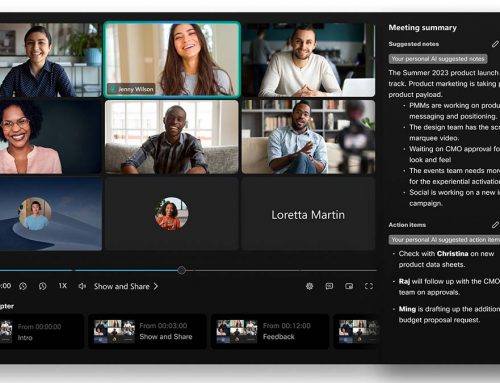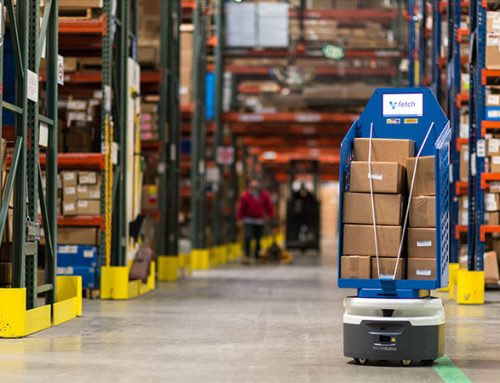While I have done my best to avoid talking specifically about Covid-19, it is time now to talk about how business will change, and how technology will help that change. Augmented reality (AR) was already a technology segment that is growing, and I’ve previously written about computer vision has the potential to change business. Augmented reality is an offshoot of computer vision, blending information that is overlaid on visual images to add context and critical knowledge. IBM was already beginning to use AR to help service customers, and that experience will help business accelerate AR usage as society changes to adapt to the new world the pandemic is creating.
Just in case you haven’t heard of IBM (wink, wink), it’s an up and coming technology firm. Oh, wait, IBM is in 180 countries and is one of the storied firms in our space. IBM Technical Support Services, part of the IBM Services group, makes more than 6 million services calls per year. Those calls are to manage equipment ranging from brand new to those that has been around for years. Many are also made by newer service technicians. Specialists are often needed to answer questions in order to properly service equipment.
In the standard world, going past a field technician’s knowledge slows down service. Phone calls don’t provide images. While mobile devices do have cameras, existing systems are slow to help the backline expert view the images, as well as not really providing clear ways to find instructions.
One expensive result of the existing resolution methods is that it is often easier to replace a piece of equipment rather than fix it. While easy, that is an expensive solution.
Augmented reality is a way around the problem. IBM has worked to build the IBM Augmented Remote Assist to visualize the equipment and the data. A 2D image can be taken by a field tech. The system then renders it in 3D in the Cloud. That allows a product expert to look at the equipment, rotating it and otherwise manipulating the image to gain more information. The image can be immediately annotated with instructions and spec details, then it is re-displayed on the field representative’s device.
“We developed that system to be as simple as possible,” said Mike Perera, General Manager, IBM Technical Support Services, IBM Services. “With the use of augmented reality, we are able to provide faster service. In 70 percent of customer calls where AR was used, we are able to provide an immediate fix because AR improved communications between field support and our product experts. In another 20 percent of calls, we are able to resolve the problem shortly after. AR has helped us provide faster, more cost effective support to our customers.”
More Artificial Intelligence Which Could Be Combined With AR
While artificial intelligence (AI) is leveraged, invisibly to the user, in AR systems, there’s more AI which could be added to the mix to provide a more robust customer support experience.
Mr. Perera has mentioned that IBM is exploring the integration of their AR front end with application performance monitors (APM). Predictive AI that is being added to APM systems can plan for expected failures and let field support and customers know ahead of time when preventative actions could eliminate downtime. The APMs can be linked to an AR system to provide annotated information and instructions to take action.
In addition, initial annotation can help all parties on the system when vision and other AI tools are used to automatically identify equipment, then use contract and inventory information to annotate information on the specific products. That will help both the frontline and backline service personnel in more rapidly analyzing the issues.
Another area I’d like to see, which they aren’t yet working on (at least enough to mention to me), is in the area of contacting backline support. Just as business is global, so too is the knowledge that supports it. Today, a field technician contacts the people she knows, and they might not have the necessary knowledge. What would be helpful is that the information the technician enters in the app would be analyzed by AI to identify the equipment and likely issue, then the right backline personnel would be contacted, regardless of the field person already knowing who the contact is. That would provide more calls with rapid expertise that will more quickly solve customer issues, improving customer experience and retention.
Covid-19 Will Accelerate, Not Create A Change in Service Calls
Concerning the current Covid-19 circumstances, the system isn’t limited to IBM field service personnel. As many clients have highly secured facilities, even before the pandemic IBM had worked to ensure that clients could download an app and their own personnel could use it to work with IBM personnel who didn’t have access to facilities. In today’s and the future environment, when we can expect more places to restrict access, that feature is critical.
As with many large companies, IBM developed the product to solve their own issue. However, it is available to customers and is being productized. This is an early version of the software, and currently works only on Apple devices. As a recent IDC report shows, Android has a more than 80% market share. The clear assumption is that IBM has standardized internally on Apple, so that was the initial focus. Until they expand to fully support the Android market, however, this is not a product that will find wide adoption.
The need for AR to enhance service calls is clear. It was already moving before the Covid-19 crisis, but current circumstances are clearly going to accelerate the inclusion of AR and AI into the service environment. That acceleration means ISVs, both large and small, need to move to provide what will soon leave the “want to have” into the “must have” set of features and functionality. There hadn’t been a rush to adopt AR, that will change over the next twelve months.









